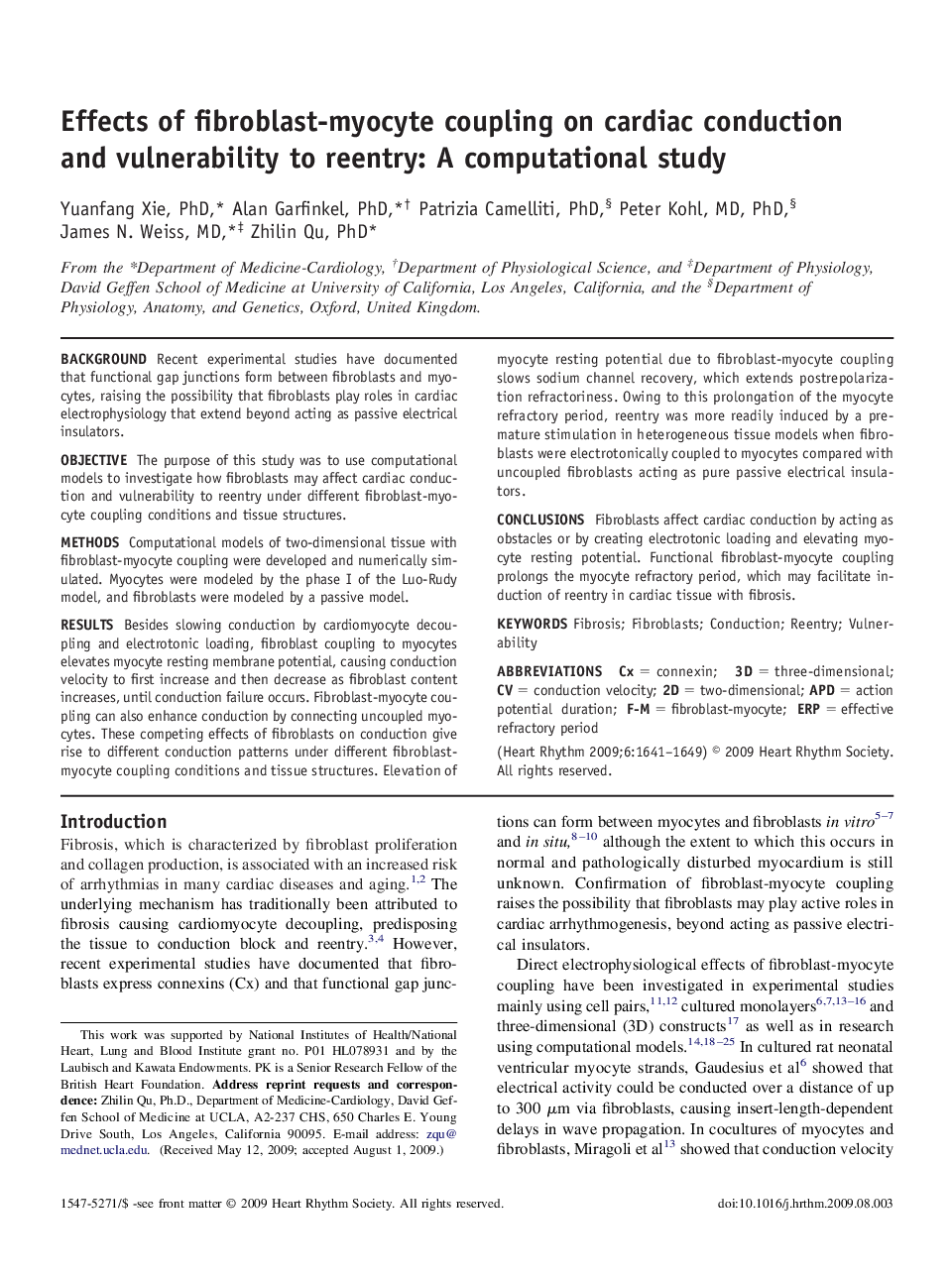| کد مقاله | کد نشریه | سال انتشار | مقاله انگلیسی | نسخه تمام متن |
|---|---|---|---|---|
| 2923726 | 1175884 | 2009 | 9 صفحه PDF | دانلود رایگان |

BackgroundRecent experimental studies have documented that functional gap junctions form between fibroblasts and myocytes, raising the possibility that fibroblasts play roles in cardiac electrophysiology that extend beyond acting as passive electrical insulators.ObjectiveThe purpose of this study was to use computational models to investigate how fibroblasts may affect cardiac conduction and vulnerability to reentry under different fibroblast-myocyte coupling conditions and tissue structures.MethodsComputational models of two-dimensional tissue with fibroblast-myocyte coupling were developed and numerically simulated. Myocytes were modeled by the phase I of the Luo-Rudy model, and fibroblasts were modeled by a passive model.ResultsBesides slowing conduction by cardiomyocyte decoupling and electrotonic loading, fibroblast coupling to myocytes elevates myocyte resting membrane potential, causing conduction velocity to first increase and then decrease as fibroblast content increases, until conduction failure occurs. Fibroblast-myocyte coupling can also enhance conduction by connecting uncoupled myocytes. These competing effects of fibroblasts on conduction give rise to different conduction patterns under different fibroblast-myocyte coupling conditions and tissue structures. Elevation of myocyte resting potential due to fibroblast-myocyte coupling slows sodium channel recovery, which extends postrepolarization refractoriness. Owing to this prolongation of the myocyte refractory period, reentry was more readily induced by a premature stimulation in heterogeneous tissue models when fibroblasts were electrotonically coupled to myocytes compared with uncoupled fibroblasts acting as pure passive electrical insulators.ConclusionsFibroblasts affect cardiac conduction by acting as obstacles or by creating electrotonic loading and elevating myocyte resting potential. Functional fibroblast-myocyte coupling prolongs the myocyte refractory period, which may facilitate induction of reentry in cardiac tissue with fibrosis.
Journal: Heart Rhythm - Volume 6, Issue 11, November 2009, Pages 1641–1649